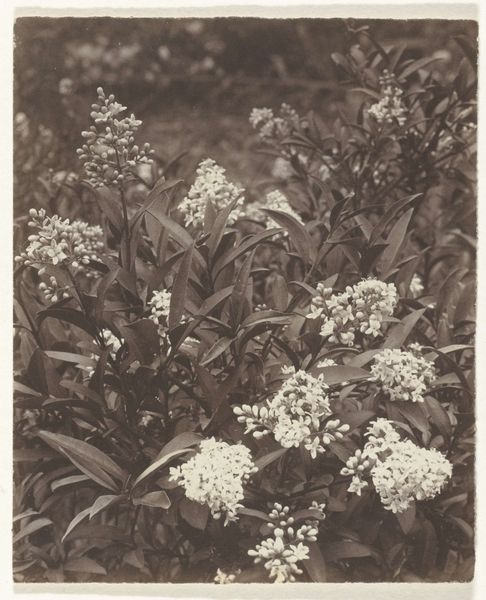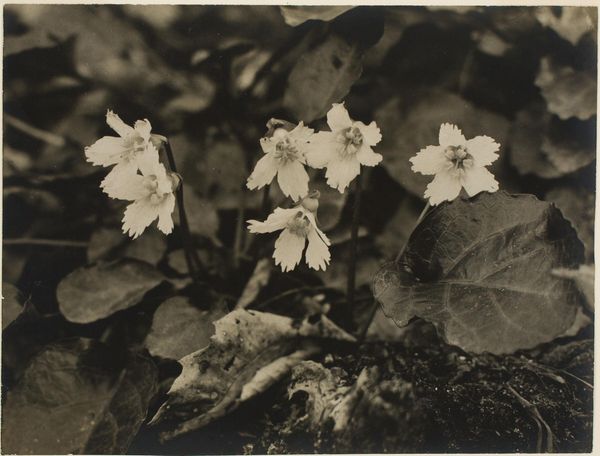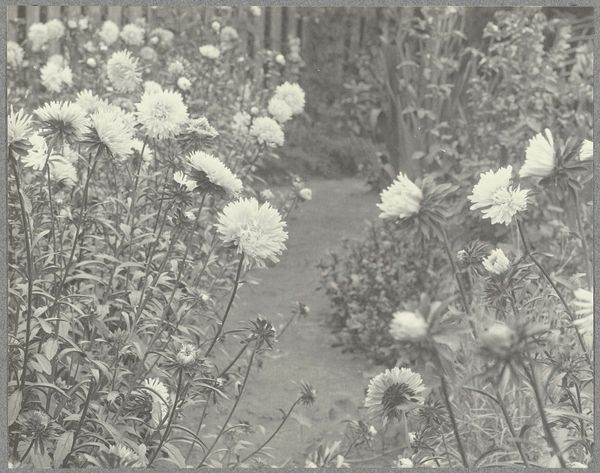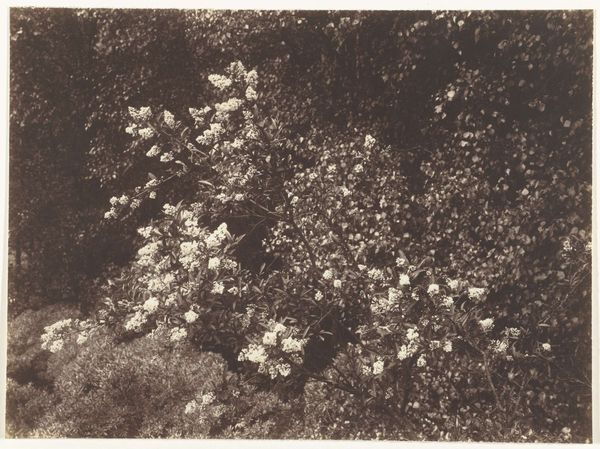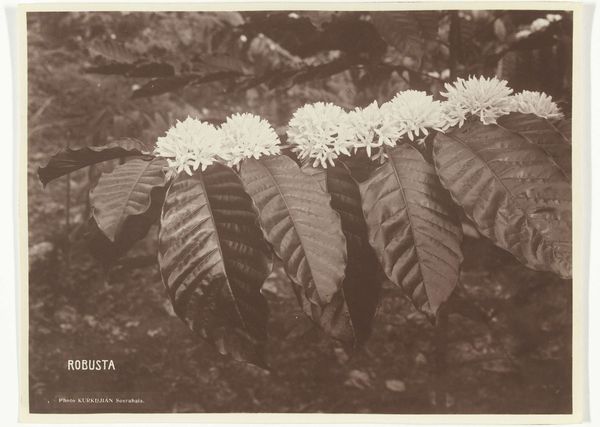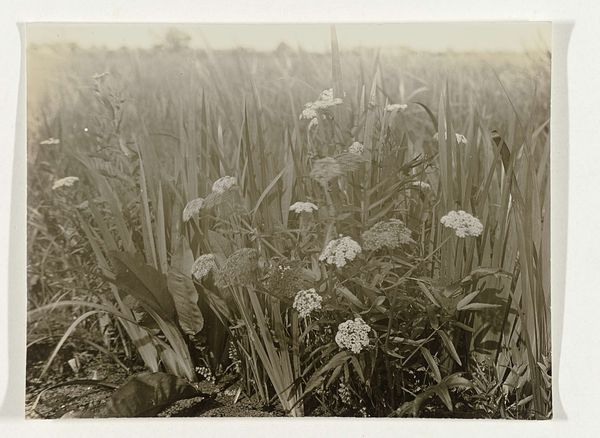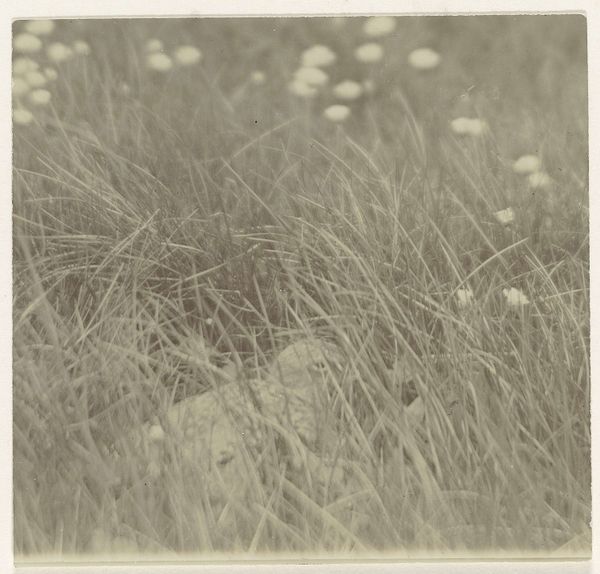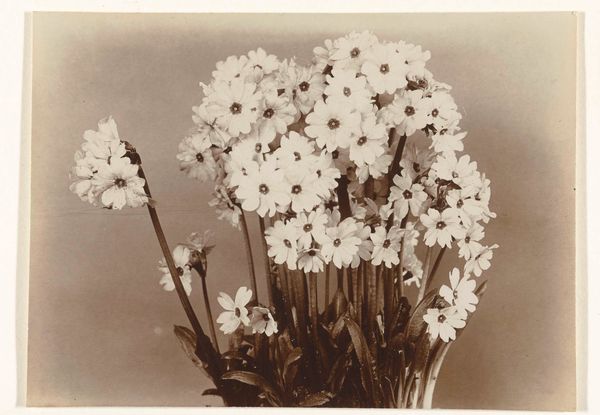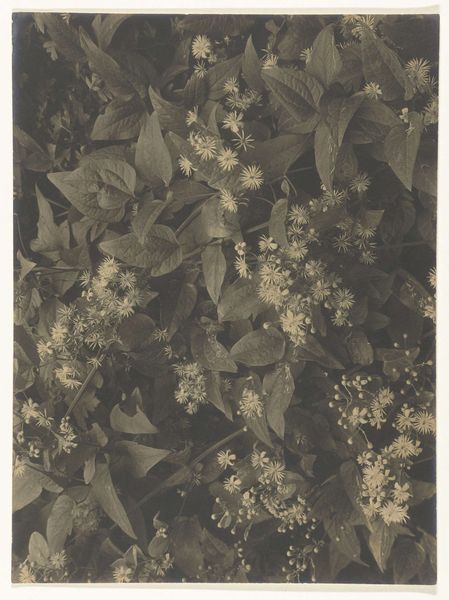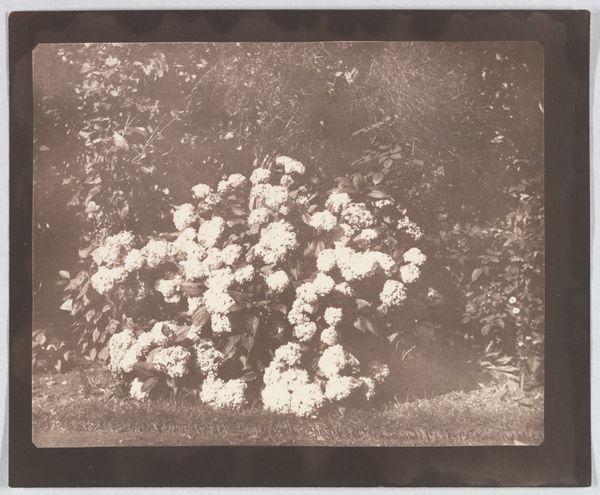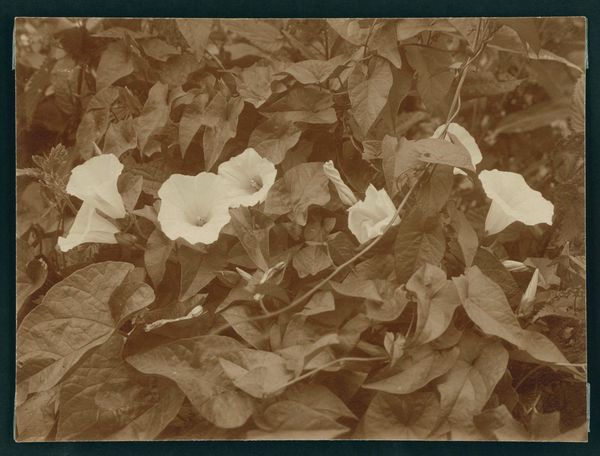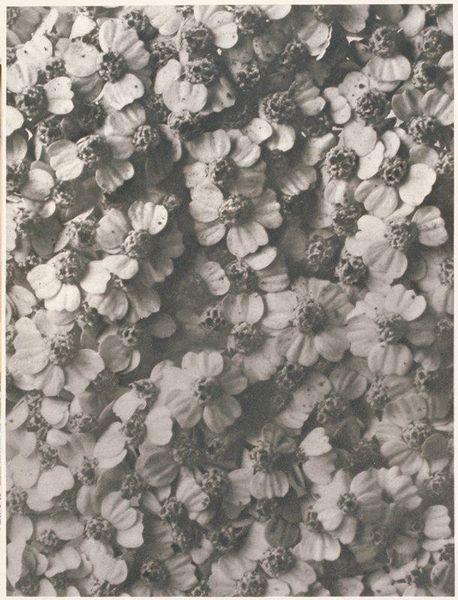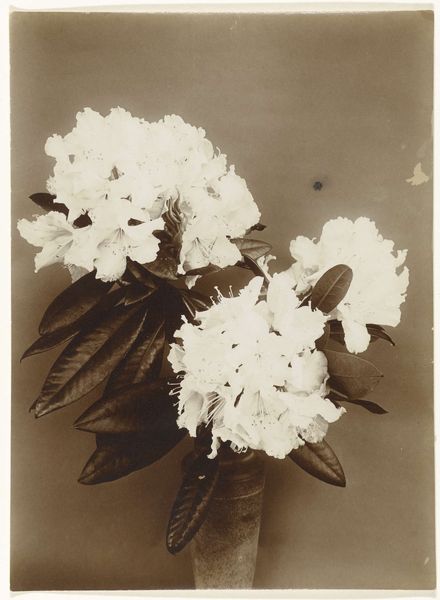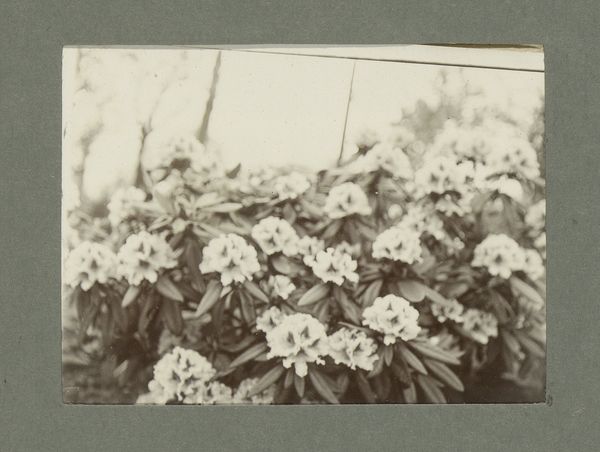
Dimensions: height 164 mm, width 219 mm
Copyright: Rijks Museum: Open Domain
Curator: This is "Wilde peen," or "Wild Carrot," a photograph by Richard Tepe, dating from between 1900 and 1930. It's currently held here at the Rijksmuseum. Editor: My first impression is of dense, tangled growth. It’s a tightly cropped view, mostly greyscale. Almost claustrophobic, but then those bursts of white… what a contrast. Curator: Indeed. Tepe was a proponent of pictorialism, aiming to elevate photography to the level of art by manipulating the image. Look at the paper he printed it on; the texture contributes to a soft, almost painterly quality. And that depth of field; shallow, just as the early modernist photographers experimented. Editor: Yes, pictorialism prized an allegorical effect and he certainly created his subject, rather than simply recorded it! I can see so many possible meanings here. The wild carrot flower itself has been a symbol of both medicine and, well, love spells! Its lacelike form has always hinted at delicate strength and natural allure. Curator: An interesting perspective! I’m drawn to consider Tepe’s process in a material sense. What darkroom techniques did he employ to achieve this tonality? Did he embrace gum bichromate or platinum printing? How does that inform how the work has aged, how its consumption impacted his era and ours? Editor: Certainly, and I imagine for his contemporary viewers, this plant growing wild held a kind of purity against a quickly industrializing landscape. Something timeless, set against ephemeral progress. Curator: Perhaps. Or maybe this signals a deeper trend in labour relations and landscape, a move toward capturing the simplicity of pre-industrial life during industrialization. Tepe himself came from wealth, and had means, which he put toward making these objects of fine art. I do agree on it being evocative! Editor: This single photo contains, through its symbols and the emotional weight, centuries of folklore and social transition. That interplay is where the work really lives. Curator: Agreed, that its enduring allure arises in those considerations that remain, between social position and enduring themes, even until today. Editor: Absolutely. "Wild Carrot," in this rendering, offers a concentrated, carefully cultivated image of nature... or a crafted illusion of the natural world?
Comments
No comments
Be the first to comment and join the conversation on the ultimate creative platform.
